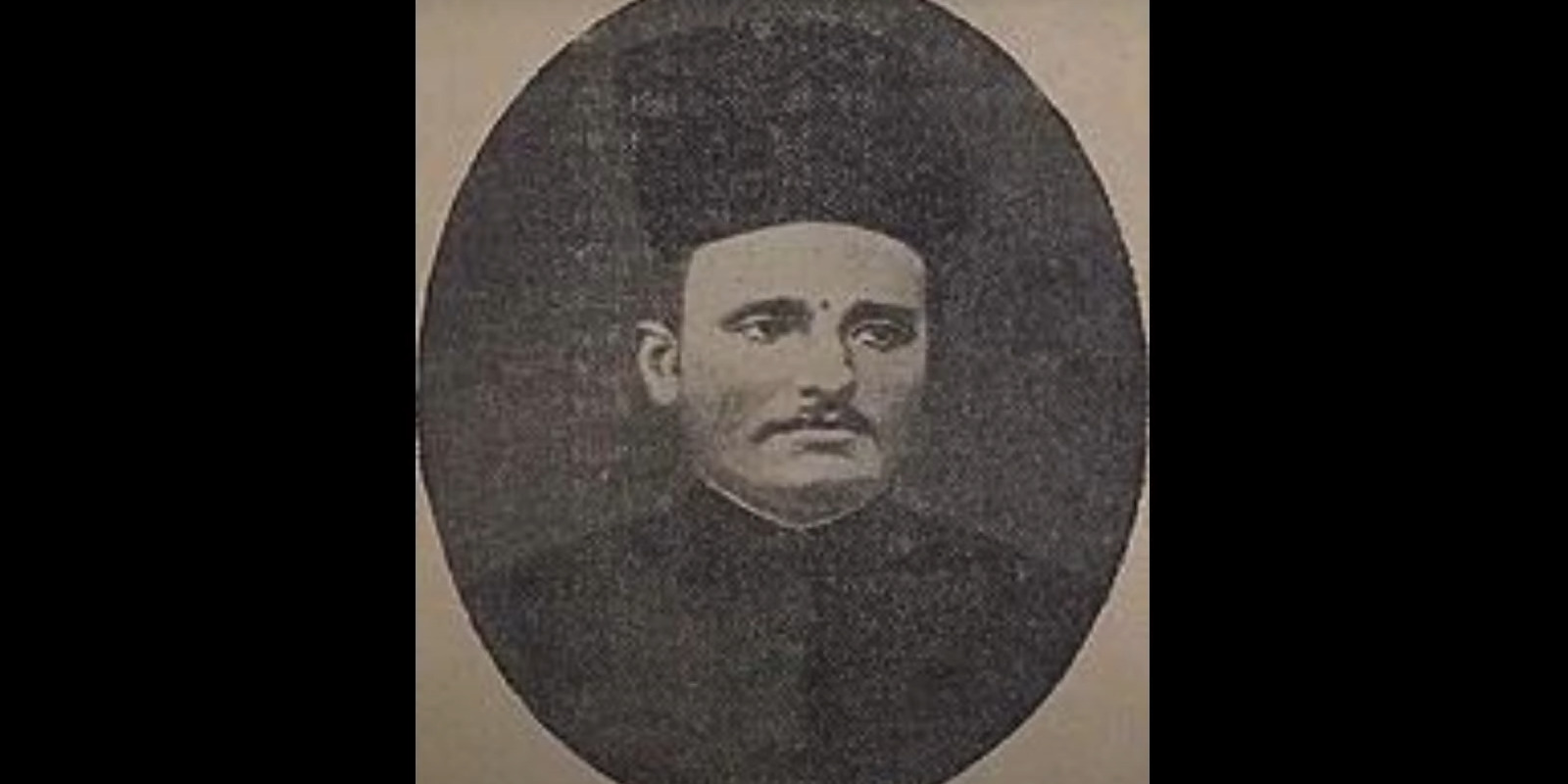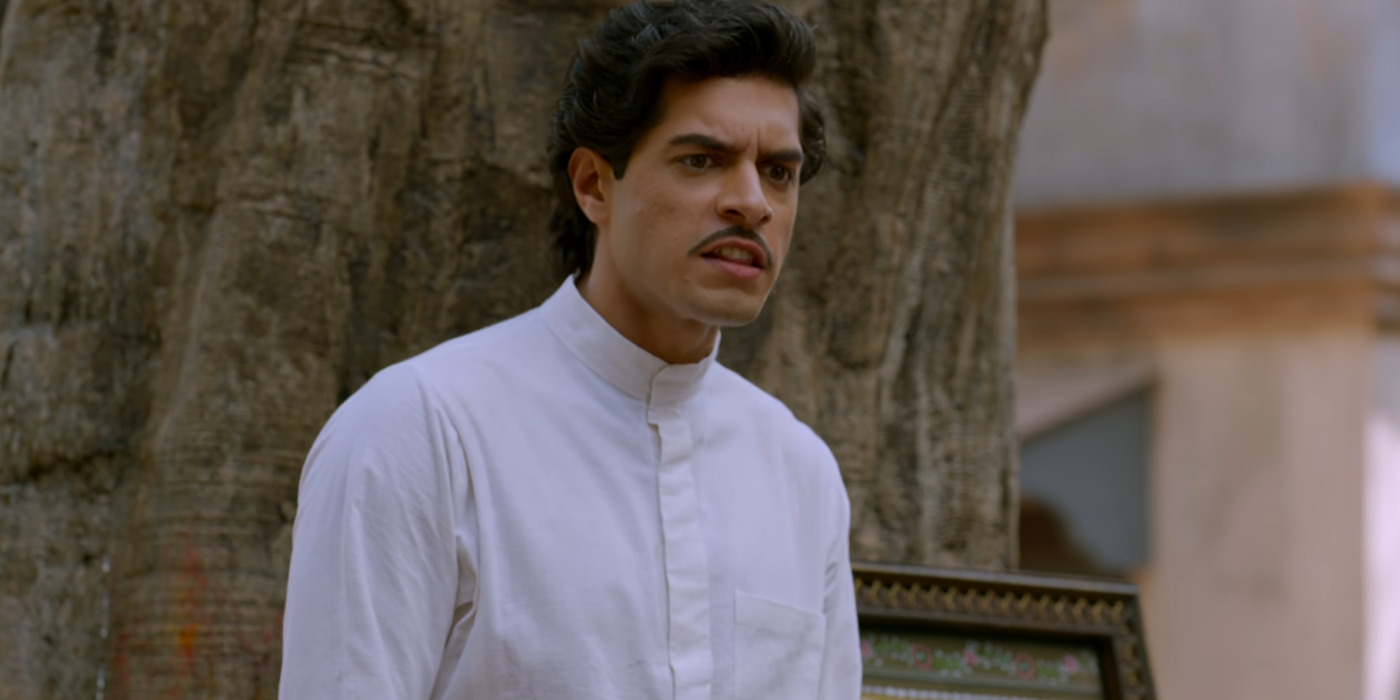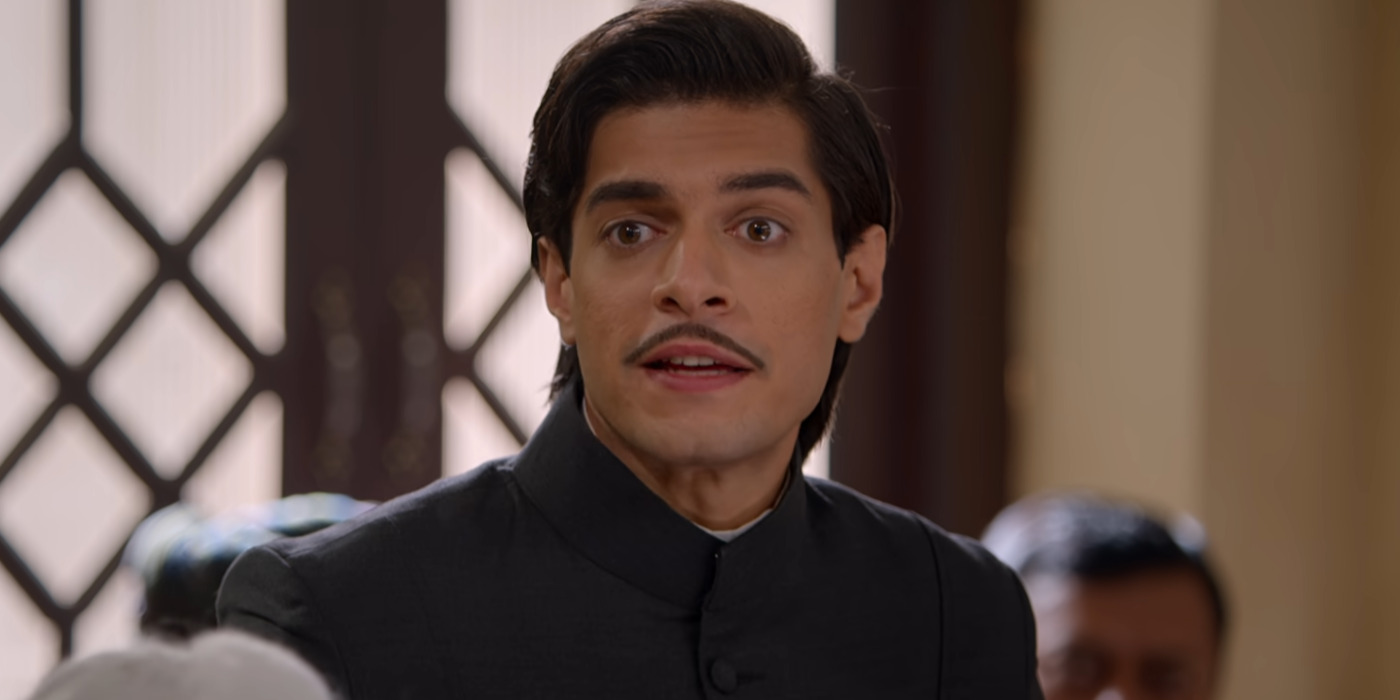The Hindi-language Netflix film, ‘Maharaj,’ transports viewers to 19th-century colonial India during the social reform movement and follows the story of a Gujarati journalist who confronts a revered fixture within the religious sect. Karsandas Mulji, editor of the Satya Prakash publication, remains a significant voice in the growing circle of social reformers. As a result, once he becomes painfully aware of the misconduct occurring in Maharaj Jadunath’s venerated Havelis, he embarks on a perilous journey of uncovering his reality to the public. Consequently, the social reformer faces an uphill battle as he makes an enemy out of Jadunath, who sits significantly higher than him on the social ladder.
Karsandas and Jadunath’s conflict results in a court case labeled the Maharaj Libel Case, where notions of journalistic independence and religious power abuse are challenged. Considering the significant historical aspect of this legal battle, Karsandas’ on-screen journey must have caught the viewers’ attention, compelling them to wonder about the character’s basis in reality.
Karsandas Mulji: The Real-Life Indian Social Reformer
‘Maharaj,’ directed by Malhotra P. Siddharth, finds its origins in the real life of Karsandas Mulji, particularly his infamous conflict with Jadunathjee Brajratanjee Maharaj, that manifested in the 1862 Maharaj Libel Case. Therefore, the film’s depiction of the on-screen character, Karsandas Mulji, retains significant ties with the real-life social reformer whom Dadabhai Naoroji mentored. The film itself is an adaption of Gujarati writer Saurabh Shah’s eponymous 2013 novel, which dramatizes the life of Karsandas Mulji.

Shah’s story’s base premise revolves around Karsandas’ social work, focusing on his venture to expose the alleged sexual misconduct taking place between Jadunath Maharaj and his female devotees. In real life, Mulji undertook a similar path, publishing articles in his newspaper that attacked Maharajas of Bombay, accusing them of sexual impropriety. Likewise, Mulji’s journalistic endeavors caught the ire of the real-life Surat-based Maharaj Jadunath, who sued him for libel in Bombay’s High Court.
As such, much of the novel’s—and, by association, the film’s—depiction of the legal and social conflict between the two men remains tied to the historical context of their real-life dispute. However, simultaneously, the story also equips creative liberty wherever necessary to ensure narrative cohesion. Even so, in converting Mulji from a historical figure to a fleshed-out dramatized character, the creative team behind ‘Maharaj’ interpreted a sense of his personhood through reliable sources.
Junaid Khan, who embodies Karsandas’ character, spoke about the same in a discussion with First Post and said, “I think we prepared for about a year. He’s [Karsandas Mulji] a real person, but not too many people have an idea about his personality. We only have access to his writings that are in the public domain, his articles, [and] his newspaper. So, deriving a personality from what he wrote, which was something that, I think, we did beautifully.”
Maharaj Dramaticizes Parts of Mulji’s Personal Life
While the film presents an accurate account of several parts of Karsandas Mulji’s life, it swerves into the realm of cinematic dramatization in other aspects. The real-life journalist was, in fact, born into a highly respected merchant Vania (better known as Bania) family, with his ancestors emigrating from Kathiawad to Bombay. Furthermore, his high status allowed him to attend the esteemed Elphinstone College. However, his time at the institution ended around the early 1850s after he wrote an essay about widow remarriage. As such, the same invited ostracization from his family. Afterward, he became a government school’s schoolmaster.

The film turns this chain of events and credits Mulji’s isolation from his family as a result of his conflict with Jadunath. Although the change allows for narrative significance, it departs part of Karsandas’s on-screen story from reality. Likewise, the character’s attention is driven towards Jadunath’s exploitation of his female devotees only after his own fiancé, Kishori, falls victim to the same. In reality, no historical records suggest Mulji’s journalistic attacks on Jadunath and other Maharajas stemmed from any such personal grievances. Instead, they were simply a part of the journalist’s work as a social reformer who advocated for women and other oppressed communities.
Maharaj Streamlines Mulji’s Social Reform Work
Since the film allocates a more personal angle to Karsandas Mulji’s conflict with Jadunath Maharaj, it ends up compressing the former’s social work regarding religious leaders’ misconduct into a battle between the two individuals. The film intentionally depicts its protagonist’s journey as a fight against one individual to provide a more streamlined narrative that highlights the film’s themes without convoluting its plot in detail. Nevertheless, as a result of the same, certain beats from the real life of Karsandas Mulji end up getting lost in his life’s translation to the big screen.

For instance, while it is true that Mulji wrote for other publications, notably Rast Goftar and Stribodh, early in his career, the man founded his own newspaper, Satyaprakash, in 1855— years before his legal battle with Jadunath. In fact, he had made a name for himself within reformation circles by 1857. According to records, he first established a conflict with religious leaders through the articles he wrote in Satyaprakash, where he attacked several Bombay Maharajas. In retaliation, the Maharajas referred the help of Jadunathjee Brajratanjee, bringing him to Bombay from Surat in 1860.
Furthermore, Jadunathjee and Mulji clashed outside of the legal system for some time in the parameters of journalism and debates before the former sued the latter. As such, the social reformer’s real-life journalistic contempt wasn’t confined to Jadunathjee but instead challenged broader traditions and superstitions of orthodox Hindus. As such, while the film authentically portrays the gist of the legal battle between its central characters, it loses some of the nuances that existed in history.
Ultimately, while the film presents an educational account of a part of Karsandas Mulji’s life, it doesn’t attempt to encompass the entirety of his work and accomplishments. In real life, after the conclusion of the Maharaj Libel Case, the journalist earned the title of “Martin Luther of the Banian Cast.” Mulji continued fighting for social reforms concerning issues of female education, superfluous wedding traditions, and funeral rites. Additionally, he administered the native state of Kathiawar in 1874. Eventually, in August of 1875, Mulji passed away under circumstances undisclosed to the general public.
Read More: Maharaj: Was Charan Seva a Real Practice in 19th Century India?


You must be logged in to post a comment.